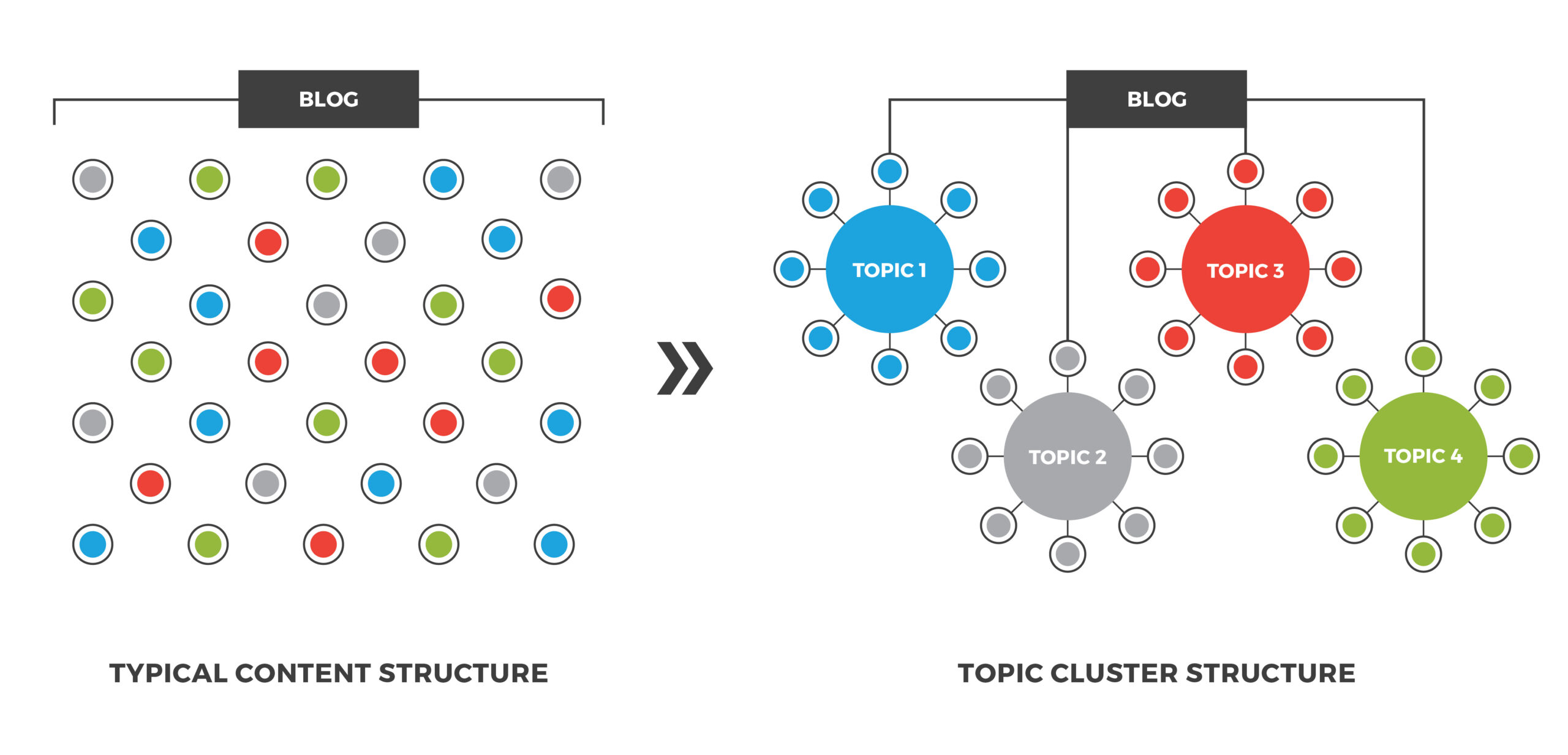International SEO is a fundamental part of a successful global digital marketing strategy. But localizing your web content (and keywords) may not be enough to rank for your high-priority topics in-market. That’s where topic clusters come in.
You’ve localized your website for your key global markets. You’ve performed in-language keyword research, mapped those keywords to the appropriate pages, and integrated them beautifully into on-page copy. Your technical SEO setup? *Chef’s kiss*.
Now what?
Globally, search engines are shifting focus to entity-based authority to decide what content to serve users. If you want to stay competitive in international search results for your target markets, you’ll need to adapt to that shift, too.
The best way to build entity-based authority internationally is by developing an in-language topic cluster and linking strategy. Here’s what you need to know:
HOW ENTITY-BASED SEO AND TOPIC CLUSTERS ARE RELATED
Google defines an entity as “a thing or concept that is singular, unique, well-defined and distinguishable.” The search engine’s shift to prioritize entities – emphasizing context and relevance – means that it’s better able to distinguish the intent of a user’s search query and deliver more relevant search results.
Establishing your brand as an entity will help more users find you when they look for goods and services related to your offering.
That’s where topic clusters come in.
Topic clusters are a way of architecting your content. They can help you adapt to entity-based SEO and build authority for your brand’s key topics.
Neil Patel describes entities as “large topics keywords live within.” Topic clusters consist of a pillar page – which covers a large topic comprehensively – and associated subtopics that go more in-depth on individual pages. It’s this structure, along with the internal linking between pages within the cluster, that builds authority around a topic. And, over time, this strategy increases your page’s ranking for that topic (or entity).
 INTERNATIONAL TOPIC CLUSTER STRATEGY IN 3 STEPS
INTERNATIONAL TOPIC CLUSTER STRATEGY IN 3 STEPS
Follow this three-step process to implement topic clusters for your international website.
1. Start with in-market keyword research.
Just like with your domestic website, in-language, in-market keyword research is the foundation of a successful content topic cluster strategy. Work with an in-country digital marketing expert to identify the most popular and broad (but relevant) keyword related to a service or product your company provides. This will be your primary keyword, and the focus of that topic’s pillar page.
Next, identify long tail keywords related to your pillar page topic. These keywords will be the focus of your supporting content, forming the cluster around your pillar page.
You’ll need to perform this step for every market you’re targeting – even other English-speaking markets.
2. Localize content (or create it from scratch).
Once you’ve identified your keywords, you’ll need to determine if you have the right content to build out each branch of the topic cluster for your target market.
If you already have localized content related to a topic keyword, you’ll need to edit your existing in-language copy to integrate that keyword. This retroactive keyword integration should be done by someone who knows both the language and best practices for optimizing on-page content.
If your English content is already relevant to your identified in-market keywords, you’ll need to localize and optimize it. To be most efficient (and effective), translation and keyword integration should be done concurrently. This ensures appropriate keyword placement without sacrificing a fluid, natural flow for readers. It also sets you up for success from day one while making efficient use of your budget.
Not all your domestic content may be relevant for in-market audiences. To rank for keywords when you don’t have in-language or English content that aligns with your target market’s needs, partner with an in-market copywriter or marketing localization agency to develop original content informed by local search trends. This will enable you to take advantage of in-market trends and align with local consumer behavior. You’ll also be able to solidify your positioning against global competitors.
Depending on which markets you’re targeting, it’s likely you’ll need to use a combination of these to flesh out your content topic clusters. Remember, in-market relevance matters above all else. It’s better to start small, with highly targeted content, than to produce a large amount of translated content that may not resonate.
3. Link it all together.
Once you have localized content and begin to build out your topic cluster, the final step is to internally link between your topic cluster content. This tells search engines that there is a semantic relationship between your content and signals authority on a topic. Over time, this will result in higher search result page placement.
This approach also provides a better experience for your users, making it easier for them to find related content on your site. Additionally, you’ll be able to guide them further along the customer journey from high-level to mid- or lower-level content.
FINAL THOUGHT
Approaching international SEO with topic clusters doesn’t replace keyword-based optimization. Rather, it works to make that optimization more effective by improving domain authority and website visibility.
Whether you’re entering a new international market or looking to improve your website visibility in an existing one, a topic cluster strategy will help take your international SEO strategy to the next level.







